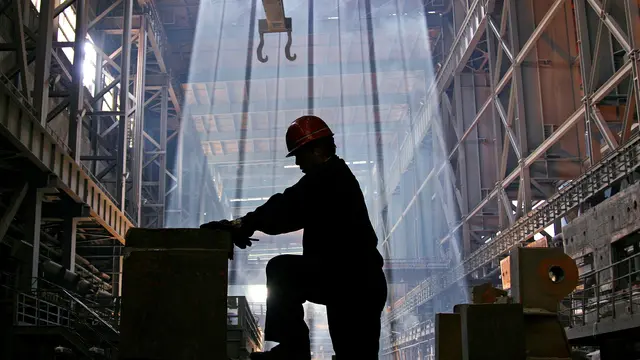After more than a month of tough battle against the coronavirus, industrial production has gradually resumed and everyday life is slowly back to normal across the country.
This trend has been made evident by the rapid increase in the "calorific value" observation data from remote sensing satellites.
The area marked with red dots, as shown in images below, indicates that the ground temperature of this area is above the average of the whole region, which usually stem from fire, industrial or energy production, or high-density production and living activities.
More and more red dots started to show on the captured images and the "heated" areas continue to expand, just like a temporarily resting runner, gradually stretching himself and gaining strength.
First, let's go to Shanghai.
Shanghai
The following two images of the Jinshan District, located in the southwest of Shanghai and to the north of the Hangzhou Bay, were captured by satellites on January 21 and February 22 respectively.

Satellite images of the Jinshan District, Shanghai. /Xinhua
On January 21, when enterprises and plants stopped operation and workers returned to their hometown for the Spring Festival holiday, the ground temperature in the whole area was relatively evenly distributed.
On February 22, more red dots started to show on the image because of the heat from the resumption of production and increase in population density.
Shanghai Chemical Industry Park (SCIP) based in the Jinshan District is a state-level economic and technological development zone, and one of the largest petrochemical bases in Asia. As of now, nearly all of the enterprises here have resumed production.
Moreover, by February 24, 347 of the 414 production-oriented enterprises in Jinshan Industry Park had resumed their business.
Similar trend can also be observed in the new Lingang area of the China (Shanghai) Pilot Free Trade Zone (FTZ).
As of February 24, a total of 971 enterprises here had resumed production, with over 40,000 employees returning to work, among which Tesla Shanghai Gigafactory resumed operation on February 10.
Ningbo, Zhejiang Province
Ningbo Petrochemical Economic and Technical Development Zone (NPETDZ), located on the southern bank of the Hangzhou Bay, is one of the leading petrochemical zones in China.
In 2018 the output value of its major enterprises totaled 190 billion yuan (about 27 billion U.S. dollars). As of February 13, 90 percent of its production had resumed, with over 13,000 employees working.
Currently, the petroleum and petrochemical sector – an important upstream industry of the national economy, has seen 95 percent of all enterprises resuming production.

Satellite images of the Ningbo Petrochemical Economic and Technical Development Zone in Ningbo, Zhejiang Province. /Xinhua
Ma'anshan, Anhui Province
Ma Steel, the state-owned iron and steel giant, is located in the city of Ma'anshan, east China's Anhui Province. As the largest industrial enterprise in Anhui, Ma Steel has kept on its operation despite the Spring Festival holiday. As of February 25, 92 percent of the major industrial enterprises in Anhui Province had resumed production, with more than 1.5 million employees returning to work.

Satellite images of the iron and steel giant Ma Steel in Ma'anshan City, Anhui Province. /Xinhua
Satellite images captured also show active resumption of industrial production in the Yangtze River Delta and central and eastern China.
(ASIA PACIFIC DAILY)
 简体中文
简体中文

